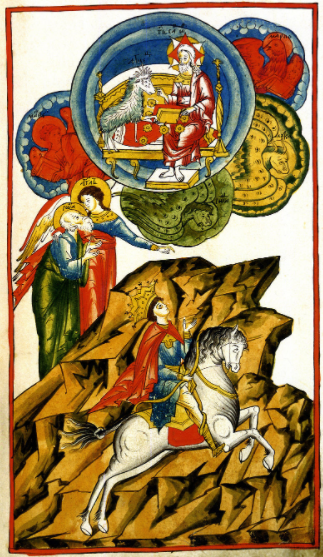Advent began on November 29, for those of us in Western liturgical churches. It’s the first of four Sundays before Christmas, as my Baptist/Evangelical followers might not know (I was a Southern Baptist for 23 years, so I can poke fun at them). But theologically Advent (from the Latin for “coming, arrival”) points not just to Jesus’ incarnational birth–it also looks to the Second Coming, when, as all three (Western) “ecumenical Creeds” state, “He will return to judge the living and the dead.” That is why the Gospel reading for this past Sunday was Mark 13:24-37, wherein Jesus said:
24 “But in those days, following that distress,
“‘the sun will be darkened,
and the moon will not give its light;
25 the stars will fall from the sky,
and the heavenly bodies will be shaken.’
26 “At that time people will see the Son of Man coming in clouds with great power and glory. 27 And he will send his angels and gather his elect from the four winds, from the ends of the earth to the ends of the heavens.
28 “Now learn this lesson from the fig tree: As soon as its twigs get tender and its leaves come out, you know that summer is near. 29 Even so, when you see these things happening, you know that it[b] is near, right at the door. 30 Truly I tell you, this generation will certainly not pass away until all these things have happened. 31 Heaven and earth will pass away, but my words will never pass away.
32 “But about that day or hour no one knows, not even the angels in heaven, nor the Son, but only the Father. 33 Be on guard! Be alert[c]! You do not know when that time will come. 34 It’s like a man going away: He leaves his house and puts his servants in charge, each with their assigned task, and tells the one at the door to keep watch.
35 “Therefore keep watch because you do not know when the owner of the house will come back—whether in the evening, or at midnight, or when the rooster crows, or at dawn. 36 If he comes suddenly, do not let him find you sleeping. 37 What I say to you, I say to everyone: ‘Watch!’”
Christ makes three major points in this passage: 1) celestial disruptions will accompany His return, so even CNN won’t be able to miss it 2) less overt signs indicating His return is nigh will appear, but no one knows the exact time and date 3) be ready for it!

The Orthodox Study Bible (p. 1351) has several interesting and helpful glosses on Christ’s words here. “This generation refers to all believers at all times (i.e., the generation of the Church), and not merely those alive at the time of Christ. Christ’s prophecy is that the Church will continue to thrive until His return, regardless of how desperate things may sometimes appear.” Also, “[t]hough Jesus declares that the Son does not know the day of His own return, St. John Chrysostom [who else?!] teaches that this is not to be understood literally, but as a figure of speech. The meaning is simply that Christ will not reveal the exact day to anyone, and that believers should not be so brazen as to inquire of Him.”
I am reminded, as well of the scene from the original Ghostbusters in which Dr. Ray Stanz (Dan Ackroyd) and Winston Zeddimore (Ernie Hudson) are riding in the Ghostbustermobile and discussing the book of Revelation (although Ray quotes Revelation 6:12 but calls it 7:12). Besides that, can you imagine a modern movie (Ghostbusters came out in 1984, recall) that explicitly mentions Jesus–and approvingly?
Winston: “Ray, do you believe in God?”
Ray: “Never met him.”
Winston: “Well, I do–and I love Jesus’ style!”
Finally, since I revisited St. John’s final book of the Bible for this post, I’d really like to draw parallels between Gandalf as the “White Rider” of The Return of the King and the rider on a white horse in Revelation 6:2 “And I looked, and behold! a white horse. He who sat on it has a bow; and a crown was given to him, and he went out conquering and to conquer.” But that would be a stretch. Per the excellent (and lengthy) study of Revelation by Dr. Louis Brighton of the Lutheran Church-Missouri Synod (pp. 75ff), the white rider of 6:2 resembles Jesus Christ on a white horse of chapter 19–but the former merely claims the divine right to conquer and does not actually possess it. However, the OSB also points out (p. 1723) in a note on 6:2 that this white rider “probably represents liberators of the oppressed people of God.” In that sense, one is reminded of Gandalf helping lead the beleaguered peoples of Middle-earth to fend off Sauron’s conquest. This is probably a better analog for Tolkien’s White Wizard than the returned Jesus Christ of the latter parts of Revelation. Gandalf, recall, was merely an angel (a Maia), not actually divine. And although he was sent back from death after the battle with the Balrog, his role was not that of Judge; nor did Gandalf defeat Sauron by his own power, as Christ will Satan when He returns.
